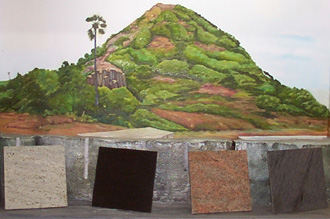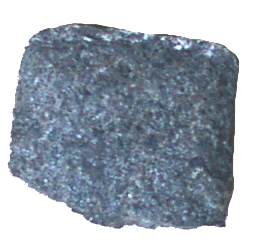 |

|
.Multicolour Granites
Granite is a coarse grained plutonic
igneous rock. It consist essentially of minerals such as quartz, feldspar and mica. During the
recent years the use of granites as monumental and decorative stones has increased world-wide.
It is exported to various countries, particularly to Italy, Japan and Korea. In India, granite
deposits are mainly distributed in Orissa, Andhra Pradesh , Karnataka and Tamilnadu.
Particularly in Tamilnadu granites are distributed in Salem, Dharmapuri, Coimbatore,
Vellore, Tiruvannamalai and Madurai districts. |
Igneous Rocks
Igneous rocks are formed by the solidification
of magma either underneath the surface or above it . On the basis of the depth of their
formation they may be classified into plutonic rocks, hypabyssal rocks and volcanic rocks.
The important
features of the igneous rocks are that they are generally hard, massive , compact with
interlocking grains. It generally contains more of quartz and feldspar minerals and entire
absence of fossils.
Important igneous rocks such
as norite, gabbro, charnockite, syenite and dolerite are on display.
|
| 
|
Norite
It is a dark grey, fine
grained granular rock comprised of dark glistening grains of pyroxenes and pale yellow
feldspars . |
Gabbro
It is a medium grained, equigranular, greyish dark
glistening grains of pyroxenes and pale grey labrodorite. It was collected from Nellore.
|

|
|

|
|